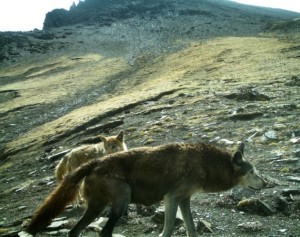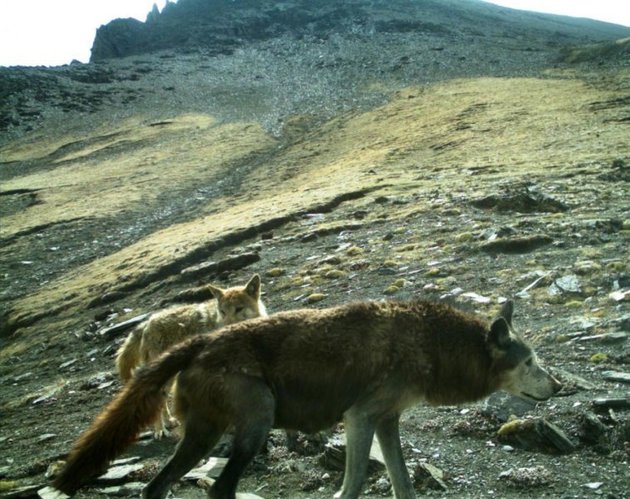
Kathmandu– A team of Nepalese researcher led by Madhu Chherti, from Norway’s Hedmark University College confirmed that four fecal samples found in Nepal’s Trans-Himalayan region belonged to Himalayan wolves. This research work has been published last week in title “Ancient Himalayan wolf (Canis lupus chanco) lineage in Upper Mustang of the Annapurna Conservation Area, Nepal” on zookeys.
Although there had been anecdotal evidence indicating that these wolves were extant in the mountains of Nepal, India and Tibet, the scientific community did not have enough evidence to believe that the wolves in the anecdote were of the aforementioned species. There were many who believed that the wolves were genetically no different from the Tibetan or the European wolves.
The study, according to the report, began in October 2011 with six fecal samples suspected to have originated from wolves were collected from Upper Mustang in the Annapurna Conservation Area of Nepal at an elevation ranging from 4,750 to 5,050 m above sea level. The researchers then extracted Fecal DNA was then extracted and analyzed.
The results showed that of the six samples, four matched with the ancient Himalayan lineage.
According to previous studies, it’s unclear how many Himalayan wolves exist . The number has been estimated at three figures. The International Union for Conservation of Nature has classed the wolves as “critically endangered”; it is also on Nepal’s National Red List.
The list notes that the major threats to the animals arise due to the loss of their habitat loss and conflict with people living near areas where they roam in the wild. Chetri’s team also made similar observations about the wolves.
They interviewed about 400 locals, many of whom were livestock owners or herders, and learned that the wolves are widely considered a serious threat to livestock. As a result, some communities hunt the wolves in order to protect livestock.
Journal Reference:
- Madhu Chetri, Yadvendradev Jhala, Shant Raj Jnawali, Naresh Subedi, Maheshwar Dhakal, Bibek Yumnam. Ancient Himalayan wolf (Canis lupus chanco) lineage in Upper Mustang of the Annapurna Conservation Area, Nepal. ZooKeys, 2016; 582: 143 DOI:10.3897/zookeys.582.5966








